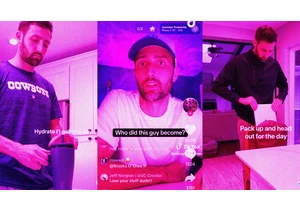When I was 15 years old, I was diagnosed with anorexia. I fully recovered, unlike many of my peers, but it was an uphill battle. One thing I’m grateful for is that in the years I was most acutely suffering from the disease, I didn’t have access to Instagram, with its continuous drip-feed showing images of unattainable bodies that young people are exposed to today. But I did have Facebook. I vividly remember returning home from treatment and immediately reconnecting with treatment friends on Facebook. I’d spend every evening on our family’s desktop computer comparing myself to them: Had they lost weight? Were they back in treatment? It was immensely triggering to be connected with folks who I considered “sicker” than I. To reach true recovery, I learned to unfriend people who were triggering to me. I learned to spend more time actively interacting with recovery-oriented peers instead of scrolling through full body photos online. I learned to limit my time on Facebook, and spend time building relationships in real life. This month, the world woke up to what survivors like myself have known for years. Social media is contributing to a growing number of men and women struggling with a range of body-image challenges, from an unhealthy relationship with food and exercise to a full-blown eating disorder. There remains a need for more comprehensive research on the impact, but the anecdotes speak volumes. I know this because I hear them from the front lines every day. We know that teens spend an average of seven hours per day on their phones, and many spend the majority of that time on social media. A young woman I mentor recently showed me her Instagram feed: Half includes people she met in treatment who are actively struggling to get well, and the other half is filled with diet influencers suggested to her by the algorithm or school friends who’ve manipulated their photos using beautification editing tools. During the pandemic, she told me she was spending up to 10 hours a day on Instagram, which would send her into daily spirals of self-loathing and food restriction. It is nearly impossible to convince teens like this young woman to delete Instagram. But there are immediate actions that we can take to lessen harm and amplify the positive sides of social media. For one, I share my personal Instagram feed with teens that I work with as an example of how they can curate a recovery-oriented community. I suggest they follow body-positive influencers in a diverse range of shapes and sizes. I share my favorite eating-disorder recovery and mental health awareness accounts. I suggest watching “Live Feeds” with recovery inspirations and people doing cool things in the world that have nothing to do with food and body. The interactions I’ve had with teens might seem like a small, simple act, but they can have a huge ripple effect. Instagram and Facebook now bear the responsibility to replicate this work on a large scale. We can significantly reduce harm, and even increase mental wellness, community, and body satisfaction if we leverage social media in the right ways. It will take honesty, introspection, and collaboration with community leaders, but I do believe that we can make these platforms safer for teens. In the meantime, we need to ensure that quality treatment is accessible to everyone with an eating disorder, which we know is the second deadliest mental illness. 80% of the 30 million Americans who develop an eating disorder will never get treatment, and less than 5% will have access to treatment that works. We have a responsibility to lessen the harm of social media platforms like Instagram, and an even greater responsibility to ensure that when folks have been harmed, they have the resources they need to fully heal.
Kristina Saffran is the cofounder and CEO of Equip.
Connectez-vous pour ajouter un commentaire
Autres messages de ce groupe

If you’ve built an audience around documenting your 9-to-5 online, what happens after you hand in your notice?
That’s the conundrum facing Connor Hubbard, aka “hubs.life,” a creator who

OpenAI should continue to be

WhatsApp should prepare to leave the Russian market, a lawmaker who regulates the IT sector

This is an edition of Plugged In, a weekly newsletter by Fast Company global technology editor Harry McCracken. You can sign up to receive it each Friday and read all issues



Big changes are coming to the web in the days ahead. On July 25, the U.K.’s Online Safe
